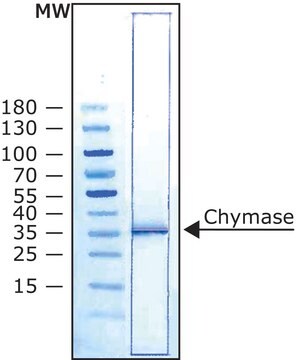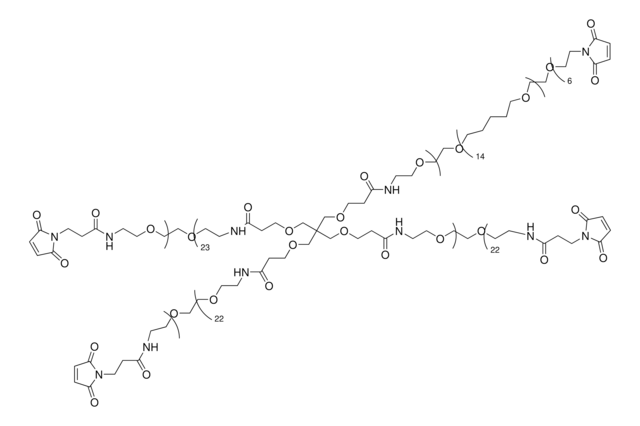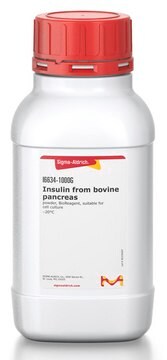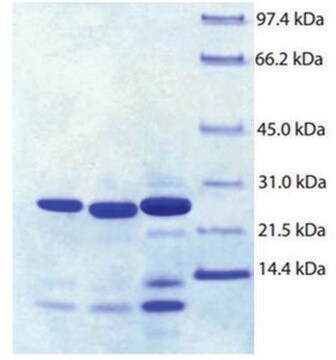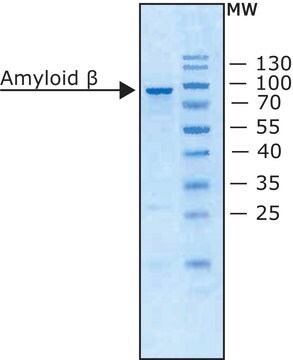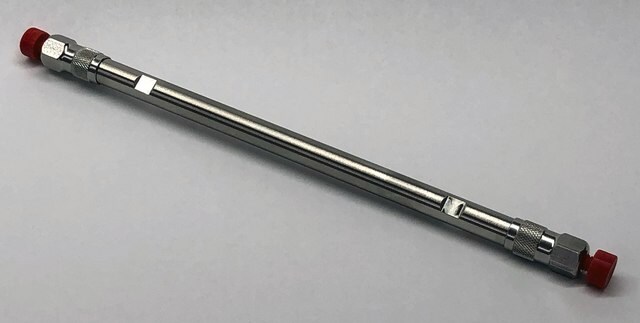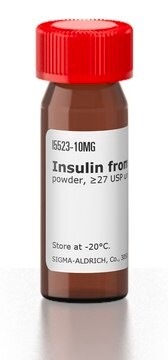RAB1754
Human Tryptase beta-2 ELISA
for serum, plasma and cell culture supernatants
Zaloguj sięWyświetlanie cen organizacyjnych i kontraktowych
About This Item
Kod UNSPSC:
41116158
NACRES:
NA.32
Polecane produkty
reaktywność gatunkowa
human
opakowanie
kit of 96 wells (12 strips x 8 wells)
metody
ELISA: suitable
moc wejściowa
sample type serum
sample type cell culture supernatant(s)
sample type plasma
assay range
inter-assay cv: <12%
intra-assay cv: <10%
sensitivity: 2 ng/mL
standard curve range: 2.048-500 ng/mL
metoda wykrywania
colorimetric
Warunki transportu
wet ice
temp. przechowywania
−20°C
informacje o genach
human ... TPSB2(64499)
Opis ogólny
Tryptase β2 (TPSB2) gene codes for mast cell tryptase β2. It is expressed in whole blood by mast cells and their progenitors. Mast cell βII-tryptase protein is a S1A protease.
Zastosowanie
For research use only. Not for use in diagnostic procedures.
Please refer to the attached Protocolfor details.
Please refer to the attached Protocolfor details.
Działania biochem./fizjol.
Tryptase β2 (TPSB2) can break down the large fibronectin substrate into multiple, smaller peptides ranging in size from approximately 30 to 50 kDa. It can also cleave fibrinogen. TPSB2 is associated with pathological inflammation.
Inne uwagi
A sample Certificate of Analysis is available for this product. Please type the word sample in the text box provided for lot number.
Ta strona może zawierać tekst przetłumaczony maszynowo.
Hasło ostrzegawcze
Warning
Zwroty wskazujące rodzaj zagrożenia
Zwroty wskazujące środki ostrożności
Klasyfikacja zagrożeń
Met. Corr. 1
Kod klasy składowania
8A - Combustible corrosive hazardous materials
Temperatura zapłonu (°F)
Not applicable
Temperatura zapłonu (°C)
Not applicable
Wybierz jedną z najnowszych wersji:
Masz już ten produkt?
Dokumenty związane z niedawno zakupionymi produktami zostały zamieszczone w Bibliotece dokumentów.
S A Brooks et al.
Animal genetics, 41 Suppl 2, 16-22 (2010-11-26)
Inflammatory damage to the digital laminae, a structure responsible for suspension of the distal skeleton within the hoof capsule, results in a painful and often life-threatening disease in horses called laminitis. There can be many diverse causes of laminitis; however
Nasz zespół naukowców ma doświadczenie we wszystkich obszarach badań, w tym w naukach przyrodniczych, materiałoznawstwie, syntezie chemicznej, chromatografii, analityce i wielu innych dziedzinach.
Skontaktuj się z zespołem ds. pomocy technicznej